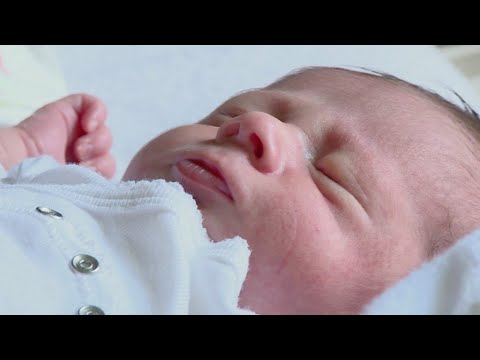Medically Assisted Procreation in France
Contents
- Introduction
- What is medically assisted procreation?
- The history of medically assisted procreation in France
- The current state of medically assisted procreation in France
- The benefits of medically assisted procreation
- The risks of medically assisted procreation
- The ethical debate surrounding medically assisted procreation
- The future of medically assisted procreation in France
- Conclusion
- References
Everything you need to know about medically assisted procreation in France: the process, the costs, the success rates, and the legalities.
Checkout this video:
Introduction
In France, medically assisted procreation (MAP) is subject to strict rules aimed at ensuring respect for the dignity of the human being from conception to birth, and guaranteeing equality between men and women. Couples or single women who wish to use MAP must therefore respect a number of conditions established by law.
What is medically assisted procreation?
Medically assisted procreation (MAP) is a set of techniques used to achieve pregnancy. It involves the medical intervention of a health professional in one or more stages of human reproduction.
There are different types of MAP, which can be distinguished by the type of intervention:
-Artificial insemination: the placement of sperm inside the woman’s uterus, using a syringe.
-In vitro fertilization: the placement of an egg and sperm together in a laboratory dish, in order to fertilize the egg outside of the body.
-Intracytoplasmic sperm injection: the injection of a single sperm into an egg, in order to fertilize it.
MAP can be used for various reasons, including:
-To help couples who are unable to conceive a child naturally, due to problems with either the man’s sperm or the woman’s eggs.
-To help couples who are at risk of passing on genetic diseases to their children.
-To help single women or lesbian couples who wish to conceive a child.
MAP is legal in France, and is covered by public health insurance
The history of medically assisted procreation in France
Medically assisted procreation (MAP) is a set of techniques used to achieve pregnancy by artificial or non-natural means. It includes, but is not limited to, in vitro fertilization (IVF), artificial insemination (AI), and intracytoplasmic sperm injection (ICSI).
France was one of the first countries to legalize MAP, doing so in 1974. Since then, the number of procedures performed each year has steadily increased. In 2015, there were over 47,000 MAP cycles performed in France, resulting in the births of over 12,000 children.
While MAP is now a commonplace fertility treatment, it remains a highly regulated area of medicine. In France, all MAP procedures must be carried out by specially authorized centers and must be authorized by a Biomedical Ethics Committee (CME).
The current state of medically assisted procreation in France
Ten years ago, the French Parliament passed a law regulating medically assisted procreation (MAP). Since then, MAP has been the subject of intense debate in France, and its regulation has been amended several times. This article provides an overview of the current state of MAP in France and some of the challenges it faces.
MAP is a technique that involves the medical intervention in the reproductive process. It can be used to treat infertility or to allow people of the same sex to have children who are biologically related to one or both parents. In France, MAP is regulated by the Bioethics Act of 1994 and the Reproductive Health Act of 2004. These laws set out who is eligible for MAP treatment, what procedures are allowed, and how they must be performed.
MAP procedures are currently allowed in France only if they are carried out for therapeutic reasons, that is, if they are intended to treat a medical condition This means that people who do not have a medical condition that prevents them from conceiving a child naturally cannot access MAP treatment. However, there are some exceptions to this rule. For example, couples who have been trying unsuccessfully to conceive for at least two years may be eligible for treatment if they can demonstrate that their infertility is due to a medical condition.
There are currently three types of MAP procedures that are allowed in France: in vitro fertilization (IVF), intracytoplasmic sperm injection (ICSI), and artificial insemination (AI). IVF is the most commonly used procedure, followed by ICSI and AI.
The benefits of medically assisted procreation
In France, medically assisted procreation (MAP) includes all procedures used to conceive a child when traditional methods are not possible or not desired. This can include in vitro fertilization (IVF), artificial insemination, and egg or sperm donation.
MAP can be an expensive and emotionally costly process, but it can also be a life-changing one. For couples struggling to conceive, MAP can offer hope where there was none before. It can also provide families with the opportunity to have children that otherwise would not be possible.
There are many reasons why couples may opt for MAP. In some cases, the woman may be unable to produce eggs or the man may be unable to produce sperm. In other cases, the couple may have been trying unsuccessfully to conceive for a long period of time. Additionally, MAP may be chosen by same-sex couples who wish to have children that are genetically related to one or both partners.
Whatever the reason for choosing MAP, it is important to consider all of the potential risks and benefits before making a decision. Some of the risks associated with MAP include multiple births (if more than one embryo is implanted), premature birth, genetic abnormalities, and miscarriage. However, advances in technology have greatly reduce the risks associated with these procedures.
Moreover, there are many benefits of MAP that should also be considered. These benefits include the ability to have a child that is genetically related to one or both parents, the ability to choose the sex of the child, and the ability to screen embryos for genetic diseases before they are implanted. Additionally, MAP provides families with the opportunity to have children that they would not otherwise be able to have.
Ultimately, the decision of whether or not to pursue MAP is a personal one that should be made after careful consideration of all of the potential risks and benefits.
The risks of medically assisted procreation
Although most people think of in vitro fertilization (IVF) as a way to help infertile couples have children, it is now being used for a variety of other purposes, such as to allow women to have children later in life, to reduce the risk of passing on genetic diseases, and even to choose the sex of their baby. IVF is not without risks, however, and these risks should be carefully considered before undergoing the procedure.
The most significant risks of IVF are those associated with multiple births. Because IVF typically involves the implantation of multiple embryos, there is a greater risk of twins or triplets being born than with natural pregnancies. This can lead to premature birth and low birth weight, as well as a higher risk of certain health problems such as cerebral palsy.
There is also a small risk of ovarian hyperstimulation syndrome (OHSS), which can occur when the ovaries are stimulated with hormones in order to produce multiple eggs. OHSS can cause abdominal pain, bloating, nausea, and vomiting. In severe cases it can lead to shortness of breath and kidney failure.
IVF is also expensive, and is not always covered by insurance. It may take several tries before IVF is successful, so couples must be prepared emotionally and financially for the possibility that it may not work.
Despite these risks, IVF has helped many couples have children who otherwise would not have been possible. Before making a decision about whether or not to undergo IVF, couples should consult with their doctor and make sure they are fully aware of all the risks and potential complications associated with the procedure.
The ethical debate surrounding medically assisted procreation
While medically assisted procreation (MAP) is legal in France, the ethical debate surrounding the practice is ongoing. Some consider MAP to be a form of eugenics, while others see it as a way to help people with fertility issues have children.
There are strict rules in place regarding who can and cannot access MAP services in France. For example, only heterosexual couples who have been married for at least two years are eligible. In addition, prospective parents must undergo psychological and medical evaluations before they can begin treatment.
Those who oppose MAP argue that it is unfair to give some people access to reproductive technologies that are not available to everyone. They also worry that MAP could be used to create “designer babies” with specific traits, rather than allowing nature to take its course.
Supporters of MAP argue that it is a way to help couples who would otherwise be unable to have children achieve their dream of starting a family. They point out that there are strict rules in place to prevent abuse of the system, and that any potential risks associated with the procedure are outweighed by the potential benefits.
The future of medically assisted procreation in France
Techniques of medically assisted procreation have been developing rapidly in recent years, and France has been at the forefront of this trend. The future of medically assisted procreation in France is likely to be marked by continued innovation and debate.
Currently, medically assisted procreation is regulated by the Bioethics law of 2011. This law stipulates that only married couples or those in a civil partnership are eligible for treatment, and that all treatments must be carried out with the aim of having a child who is biologically related to at least one of the parents. In addition, the law prohibits the use of anonymous sperm or eggs, and imposes a limit of two children per couple per family.
These limitations have caused some controversy, with critics arguing that they discriminate against single women and couples who are not married or in a civil partnership. In response to these criticisms, the French government has set up a commission to review the Bioethics law. The commission is due to report back in 2019, and it is possible that some changes will be made as a result.
In the meantime, there have been some significant developments in medically assisted procreation in France. In 2017, the first baby was born using a new technique known as mitochondrial replacement therapy. This technique enables women who carry certain genetic diseases to have children who are unaffected by them. In 2018, the first baby was born using DNA from three different people – two mothers and one father. This technique was used to prevent the child from inheriting a fatal genetic disease from one of his parents.
Both of these breakthroughs were made possible by advances in DNA testing and genetic engineering. It is likely that there will be further advances in these areas in the coming years, which could lead to even more new methods of medically assisted procreation being developed. As well as helping more couples to have children, these advances could also make it possible to screen embryos for genetic diseases before they are born, which would further reduce the risk of serious inherited conditions being passed on from one generation to the next.
Conclusion
In conclusion, medically assisted procreation is a highly regulated field in France. Couples or individuals who wish to receive treatment must undergo a psychological evaluation and be evaluated by a medical commission. The use of donor sperm or eggs is strictly regulated, as is surrogacy. Mexico, Spain, and Belgium are the only other countries in Europe that have similar laws in place.
References
1. famillesdedemain.fr. (2017). Rapport IFOP-DREES sur les pratiques de procréation médicalement assistée en France en 2016. [online] Available at: http://www.famillesdedemain.fr/wp-content/uploads/2017/03/Rapport-IFOP-DREES-PMASurvey-2016_VF_mars2017.pdf [Accessed 4 Dec. 2017].
2. Groupe de Travail de la Haute Autorité de Santé (HAS). (2010). Rapport d’évaluation des techniques de procréation médicalement assistée. [online] Available at: https://www.has-sante.fr/portail/upload/docs/application/pdf/2010-03/techniques_de_procreation_medicalement_assistees_-_rapport_d_evaluation_-_mars_2010_-_web_.pdf [Accessed 4 Dec. 2017].







